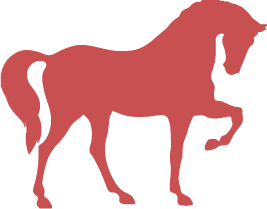EQUINE SPECIALS: SPECIAL OFFERS FROM THE XMAS CATALOGUE
Here are our leading offers for your horse from the Xmas Catalogue. Prices may vary due to freight. Broad-spectrum intestinal wormer for…
Free Delivery when you spend $49 or more. (Weight Limits Apply – view more)
 Dog
Dog

Shop Tuckers great range of dog food, health care & wellness products today. Delivered or Click & Collect.
 Cat
Cat

Tuckers has a great range of cat food, health care & litter products for your beloved cat. Shop now.
 Horse
Horse

Tuckers carry a huge range of food, supplements, health care, hoof care and grooming accessories. Shop now.
 Chook/Bird
Chook/Bird

Tuckers range of food, accessories & health care products will keep your chooks & birds happy and healthy.
 Small Animal
Small Animal

Shop food and health care products for your little mates @ Tuckers. Delivered or Click & Collect.
 Farm/Garden
Farm/Garden

Tuckers carry a wide range of sheep & cattle products, plus everything you’ll need around the farm or garden.
 Dog
Dog

Shop Tuckers great range of dog food, health care & wellness products today. Delivered or Click & Collect.
 Cat
Cat

Tuckers has a great range of cat food, health care & litter products for your beloved cat. Shop now.
 Horse
Horse

Tuckers carry a huge range of food, supplements, health care, hoof care and grooming accessories. Shop now.
 Chook/Bird
Chook/Bird

Tuckers range of food, accessories & health care products will keep your chooks & birds happy and healthy.
 Small Animal
Small Animal

Shop food and health care products for your little mates @ Tuckers. Delivered or Click & Collect.
 Farm/Garden
Farm/Garden

Tuckers carry a wide range of sheep & cattle products, plus everything you’ll need around the farm or garden.

Article Courtesy of Benchmark Feeds
For a long time now, laminitis has been thought to be a result of inflammation of the laminae of the hoof – the soft tissue structures that attaches the coffin bone of the foot to the hoof wall. Without the coffin bone properly attached to the inside of the hoof wall, the weight of the horse forces the bone away from the hoof capsule, damaging arteries and veins thereby restricting blood flow to the sole and coronet, causing extreme pain and lameness. The cause of this inflammation has thought to have been a result of an incidence of grain overload in the hindgut region resulting in acidosis and “leaky gut” syndrome or from systemic illness or infection such as a retained placenta in a mare. These certainly cause laminitis in horses but they only account for about 10 to 20% of all cases reported. The other 80 to 90% are a result of endocrinopathic (metabolic) causes, primarily insulin resistance (IR).
Endocrinopathic laminitis is a general term which describes laminitis that develops in horses with endocrine (hormonal) and/or metabolic disorders. This includes laminitis that is associated with obesity, IR and elevated adrenocorticotrophic (stress) hormone levels. Two common equine related diseases which are known to induce such symptoms are Equine Metabolic Syndrome (EMS), where a horse becomes obese amongst other things, and IR. Each one relates to an excessive intake of energy in the diet, particularly in the form of non-structural carbohydrates (NSC) – sugars and starch.
Insulin resistance (IR) is a failure of the body’s organs and muscles to adequately respond to changes in the level of insulin in the blood because of a continual oversupply of sugar in the horse’s diet. As a result, there is either an overload (compensated IR) or underproduction (uncompensated IR) of insulin in the blood meaning the animal is unable to regulate its blood glucose levels, similar to a human diabetic.
Excessive energy intake in the horse’s diet (particularly sugars) leads to obesity and development of EMS and IR. Now that we know the underlying cause for endocrinopathic laminitis, how do we manage it to prevent reoccurring (chronic) laminitis? There are three components involved in managing the diseases – Diet modification, exercise and drug therapy with diet being the main method of minimising, even preventing, laminitis.
One of the common factors in all horses suffering from endocrinopathic laminitis is obesity. The first step is to reduce the horse’s dietary calorie intake. Most horses will eat around 2% of their body weight (BW) in dry matter (DM) each day while ponies can consume as much as 5% each day. It’s important to reduce the amount of energy they consume daily in their diet to induce weight loss while maintaining a balanced diet in all other nutritional aspects.
Soybean Hulls can play an important role:
Soybean hulls are a type of feed classified as Highly Fermentable (or Super) Fibres. Highly fermentable fibres are complex carbohydrates containing high levels of cellulose, hemicellulose, and pectin which can be readily fermented by the hindgut microbes but contain much less of the non-digestible lignin than other fibre sources like hay and grass. They also contain high concentrations of readily degradable non-starch polysaccharides (complex chains of sugars that are not digested in the small intestine but can be fermented in the horse’s hindgut but, unlike starch, are not used by microbes to produce lactic acid) that produce large volumes of Volatile Fatty Acids (VFA). These VFAs are the primary source of energy for a horse, not sugars.
Soybean hulls are simply the seed coat of the soybean that have been removed from the bean during the oil extraction process. They are high in pectin as well as other soluble fibres including NSP, making them readily fermented by the microbes in the hindgut. Like other highly fermentable fibres they are low in sugars and starch meaning little risk of health issues such as acidosis and leaky gut syndrome and great for horses prone to laminitis and colic.
Dr Mark Barnett (PhD), Owner & Equine Nutritionist for MTB Equine Services, Nutritional Consultant to Benchmark Horse Feeds
Dr Mark Barnett PhD
Equine Nutritional Consultant to Benchmark Horse Feeds
MTB Equine Services
www.mtbequine.com
This is an abridged version of Dr Barnett’s article. The full version is available on the Benchmark website www.benchmarkfeeds.com.au/advice-support/news-events
Entire range - quick and secure delivery
Buy securely online and pickup at your local store
Call your local store and come on down to pickup
© 2024 Tuckers Pet & Produce.
